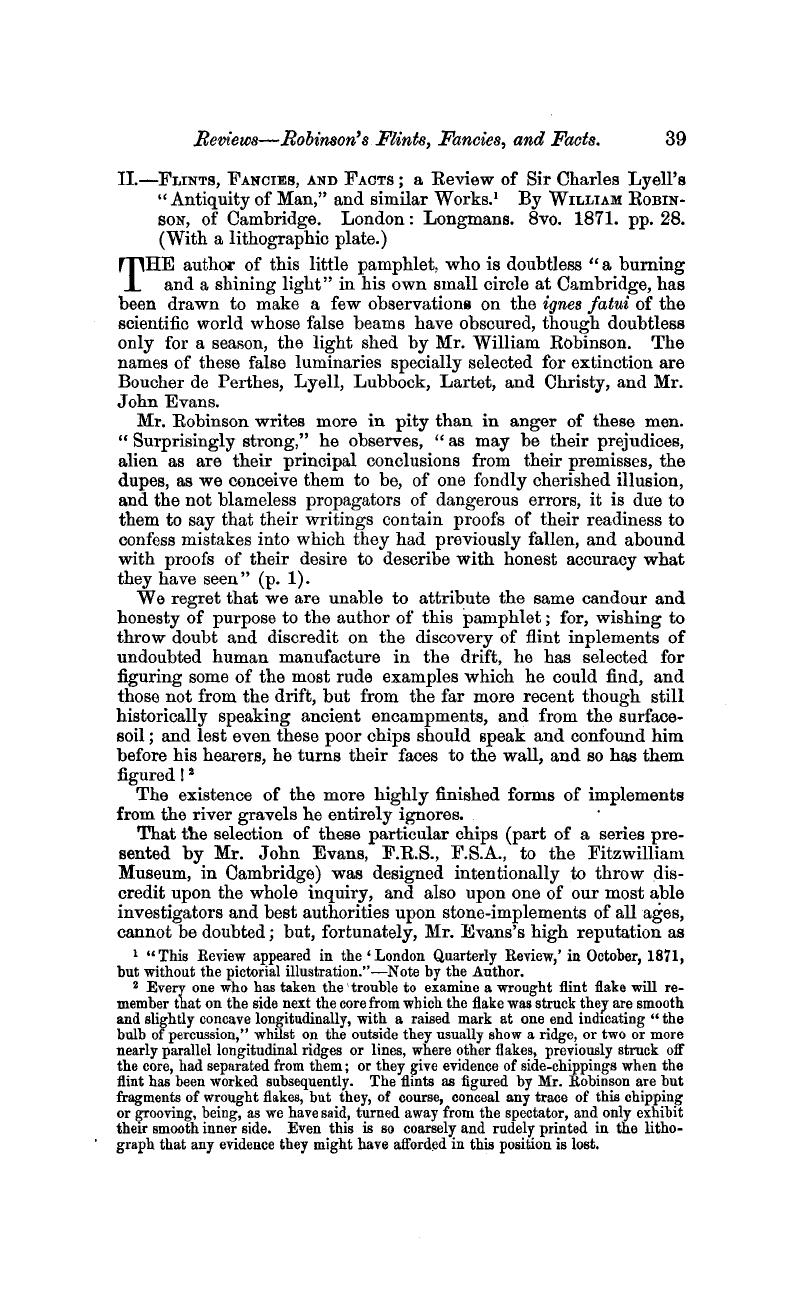No CrossRef data available.
Published online by Cambridge University Press: 01 May 2009

page 39 note 1 “This Review appeared in the ‘London Quarterly Review,’ in October, 1871, but without the pictorial illustration.”—Note by the Author.
page 39 note 2 Every one who has taken the trouble to examine a wrought flint flake will remember that on the side next the core from which the flake was struck they are smooth and slightly concave longitudinally, with a raised mark at one end indicating “the bulb of percussion,” whilst on the outside they usually show a ridge, or two or more nearly parallel longitudinal ridges or lines, where other flakes, previously struck off the core, had separated from them; or they give evidence of side-chippings when the flint has been worked subsequently. The flints as figured by Mr. Robinson are but fragments of wrought flakes, but they, of course, conceal any trace of this chipping or grooving, being, as we have said, turned away from the spectator, and only exhibit their smooth inner side. Even this is so coarsely and rudely printed in the lithograph that any evidence they might have afforded in this position is lost.
page 40 note 1 See his Obituary Notice, Geol. Mag., 1868, Vol. V., October Number, p. 487. Monsieur Boucher de Perthes was 79 years of age when he died.